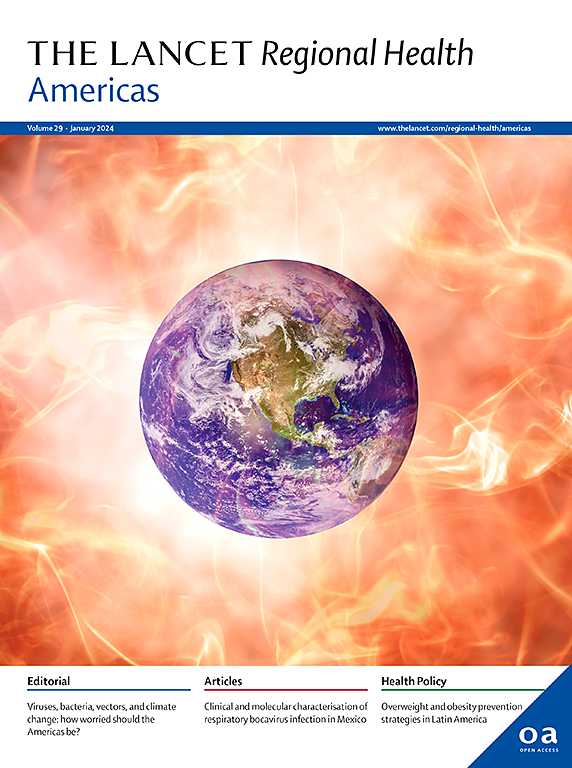Favorable outcomes of restrictive treatment indications in chronic lymphocytic leukemia: a retrospective analysis of Brazilian Registry of CLL
IF 7
Q1 HEALTH CARE SCIENCES & SERVICES
引用次数: 0
Abstract
Background
The Brazilian Group of CLL (BGCLL) has proposed a more restrictive approach for treatment initiation compared to the International Workshop on Chronic Lymphocytic Leukemia (IWCLL) guidelines. Here, we report on the safety and efficacy of this strategy.
Methods
We performed a retrospective analysis of patients with CLL registered in the Brazilian CLL Registry between January 2009 and July 2023 who met the minimum data availability criteria for analysis. The BGCLL criteria employ stricter thresholds for cytopenias, defining them as hemoglobin levels below 9.5 g/dL or platelet counts below 50,000/mm3, as opposed to the IWCLL criteria of below 10 g/dL and below 100,000/mm3, respectively. Furthermore, the BGCLL criteria do not consider progressive lymphocytosis or disease-related symptoms to be criteria for treatment initiation when cytopenias or symptomatic masses are absent. Survival outcomes were estimated using the Kaplan–Meier method and compared with log-rank tests. Cox proportional hazards models were used for multivariable analysis, with results expressed as hazard ratios and 95% confidence intervals. A P-value <0.05 was considered statistically significant.
Findings
A total of 2511 patients were enrolled from 41 centers. Of these, 1404 patients (56%) met the IWCLL criteria for treatment initiation (liberal criteria), whereas only 788 patients (31%) met the BGCLL criteria (restrictive criteria). Patients with liberal criteria had a better overall survival than those with restrictive criteria (85% vs. 68%, respectively), suggesting that restrictive criteria were more predictive of prognosis than liberal criteria. In addition, patients treated for cytopenias had significantly worse overall survival (69%) compared to those treated for any other indication (97%, P < 0.0001). Patients with disease-related symptoms, progressive lymphocytosis, and extranodal involvement as isolated indications for treatment had similar overall survival to those with no indication for treatment.
Interpretation
Our results demonstrate that a more restrictive approach to treatment initiation in CLL, as proposed by the BGCLL, better identifies patients with higher disease burden and poorer outcomes, while sparing others unnecessary therapy.
Funding
Brazilian Registry of CLL–Brazilian Association of Hematology and Hemotherapy (ABHH)/Coordenação de Aperfeiçoamento de Pessoal de Nível Superior (CAPES).
慢性淋巴细胞白血病限制性治疗适应症的有利结果:巴西CLL登记的回顾性分析
与国际慢性淋巴细胞白血病研讨会(IWCLL)指南相比,巴西CLL小组(BGCLL)提出了一种更严格的治疗起始方法。在这里,我们报告了这种策略的安全性和有效性。方法:我们对2009年1月至2023年7月在巴西CLL登记处登记的CLL患者进行回顾性分析,这些患者符合分析的最低数据可用性标准。BGCLL标准采用更严格的血细胞减少阈值,将其定义为血红蛋白水平低于9.5 g/dL或血小板计数低于50,000/mm3,而IWCLL标准分别低于10 g/dL和10万/mm3。此外,当没有细胞减少或症状性肿块时,BGCLL标准不认为进行性淋巴细胞增多或疾病相关症状是开始治疗的标准。使用Kaplan-Meier法估计生存结果,并与log-rank检验进行比较。Cox比例风险模型用于多变量分析,结果用风险比和95%置信区间表示。p值<;0.05被认为具有统计学意义。研究结果:共有来自41个中心的2511名患者入组。其中,1404例患者(56%)符合IWCLL治疗开始标准(自由标准),而只有788例患者(31%)符合BGCLL标准(限制性标准)。自由标准患者的总生存率高于限制性标准患者(分别为85%和68%),表明限制性标准比自由标准更能预测预后。此外,与接受其他适应症治疗的患者(97%,P < 0.0001)相比,接受细胞减少治疗的患者的总生存率(69%)明显更差。以疾病相关症状、进行性淋巴细胞增多和结外受累作为单独治疗指征的患者与无治疗指征的患者的总生存率相似。我们的研究结果表明,正如BGCLL提出的那样,对CLL的治疗起始采取更严格的方法,可以更好地识别疾病负担较高和预后较差的患者,同时避免其他不必要的治疗。cll巴西注册中心-巴西血液学和血液治疗协会(ABHH)/协调高级医疗卫生组织(CAPES)。
本文章由计算机程序翻译,如有差异,请以英文原文为准。
求助全文
约1分钟内获得全文
求助全文
来源期刊

Lancet Regional Health-Americas
Multiple-
CiteScore
8.00
自引率
0.00%
发文量
0
期刊介绍:
The Lancet Regional Health – Americas, an open-access journal, contributes to The Lancet's global initiative by focusing on health-care quality and access in the Americas. It aims to advance clinical practice and health policy in the region, promoting better health outcomes. The journal publishes high-quality original research advocating change or shedding light on clinical practice and health policy. It welcomes submissions on various regional health topics, including infectious diseases, non-communicable diseases, child and adolescent health, maternal and reproductive health, emergency care, health policy, and health equity.
 求助内容:
求助内容: 应助结果提醒方式:
应助结果提醒方式:


